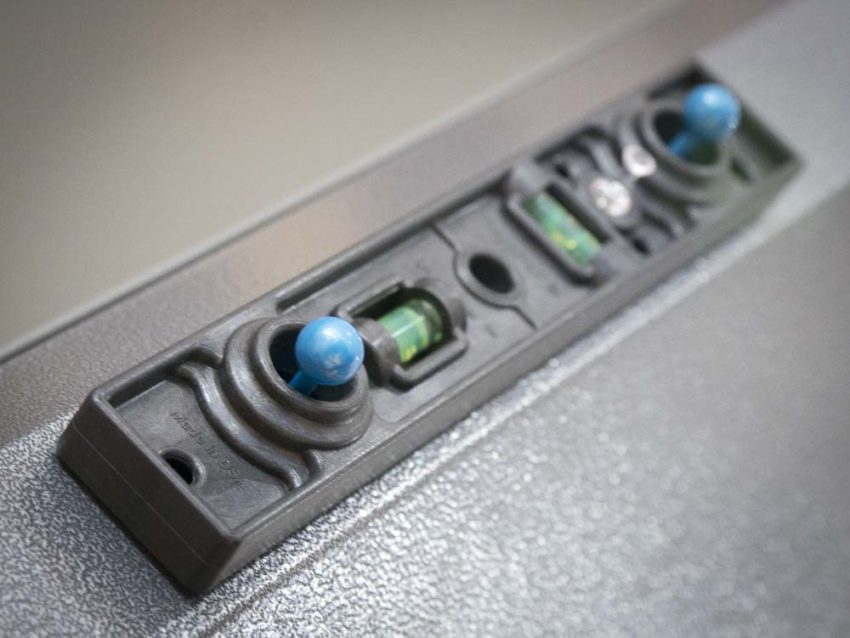The StudPop is an update on the humble magnetic stud finder. Swap out the old magnet and pop in a rare earth magnet and you get a more effective model. It’s just as simple to use as the old one in my Dad’s toolbox and a couple of levels up in effectiveness. Now we have our hands on the StudPop Level, or StudPop On the Level to be precise. Take two StudPops, build a 9″ ABS spirit level around them and you get the StudPop Level.
We’ve been using it for several weeks now and we’ve put together some thoughts for you on this $20 stud finder.
Editor’s Note: Check out our best stud finder article to get our top picks.
Key Features
- Uses 2 StudPops – Rare earth magnets find studs by the nails or screws used in the process of building walls. Because it’s based on magnets, there are no battery or calibration issues to worry about.
- 9″ ABS Level – Horizontal and plumb dual line vials make it easy to see when you’re level. The width matches that of a 2×4 stud so you can see where the edges are.
- Works on Multiple Materials – Rare earth magnets find studs through sheetrock, plaster, tile, and wood lathe.
- Grip Pin – Holds the StudPop Level on the wall to free up your hand.
Additional Feature Notes
Using the original StudPop is almost fun because of the way you glide it across the wall to find your stud. The concept is identical with the StudPop On the Level and having two magnetic contact points means you cover ground more effectively. You’ll notice that the StudPops sit slightly out from the level so they’re the only material touching the wall. You’ll also notice that the amount of noise it creates doubles.
Don’t take the StudPop Level seriously as a replacement for your torpedo level. The ABS plastic construction is tough, but you can scuff it and it’s not designed to be as accurate as a professional dedicated level.
The grip pin can hold the StudPop Level in place at the cost of a pinhole in your wall. That also makes it effective for placing a small mark as an indicator – you’re just limited to being within a few inches of a stud screw. With the original StudPop’s ability to stay on the wall on its own, it’s a little disappointing that the level adds too much weight to say the same for this model.
Using the StudPop On the Level
Because you’re using a magnetic stud finder, you’re going back to a game of hide and seek with hidden screws and nails. If you’re used to modern electronic stud finders like Ryobi’s Whole Stud Finder or Franklin’s Prosensor T6, it can be a little frustrating. In fact, that was Clint’s reaction as he was working on building a new pallet wall for our video set. He gave the StudPop Level an honest shot, but knowing he had electronic options available sent it home halfway through the project.
That’s not to say the StudPop On the Level doesn’t work – it does! There’s a reason that Pros pay more for electronic stud finders, though. It works just fine within the same limitations as other magnetic stud finders.
There is one other consideration – the whole stud width. It’s great that the StudPop Level is the same width as a 2×4 stud, but that doesn’t mean you’re actually going to see where the whole stud is. Most of those screws and nails aren’t perfectly centered on the stud, so your level is going to be off center the same amount as the screw. However, a line straight through the center of the level will keep you on the stud.
The Bottom Line
The StudPop On the Level is a step forward for magnetic stud finders with its rare earth magnets and ability to keep you on the stud better. It’s not an effective replacement for a good electronic stud finder, but it is less expensive in most cases. It’s also able to work against more materials like plaster and tile. For DIYers, it’ll help you get excellent results without the cost of Pro-level sensors.






